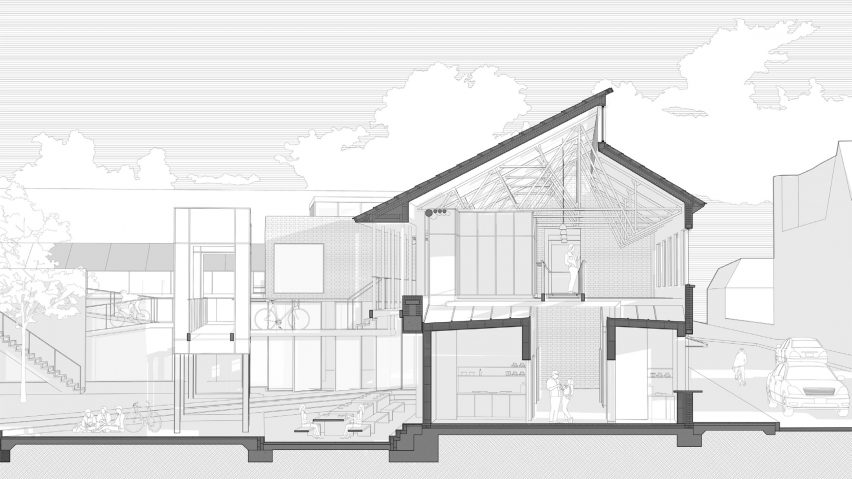
Oxford Brookes University spotlights 10 architecture projects
Dezeen School Shows: a soya production hub located in a reused flour mill and a city-wide design that creates safe routes for food delivery drivers are included in Dezeen's latest school show by students at Oxford Brookes University.
Also included is a public landscape project at the River Thames that uses stone recycled from demolished buildings and a plant-based food production market located in an urban context.
Oxford Brookes University
Institution: Oxford Brookes University
School: School of Architecture
Course: The RIBA Studio
Tutors: Maria Faraone, Darren Stacey, Guan Lee, Alison Crawshaw, Luke Murray, Theo Malloy, Ben Stringer, Alexandra Lacatusu, Adam Barlow, Alice Howland and Connie Ivanova
School statement:
"The RIBA Studio is a unique route to becoming a registered architect. Our students study while working full-time in practice in either the UK or European Economic Area (EEA).
"Comprising Foundation, Certificate (Part 1) and Diploma (Part 2) courses, our programme is about freedom – students are free from a predetermined set of specific topics and agendas.
"Students are free to follow their passions and curiosities to shape the four subject areas, including design, technology, cultural context and professional studies.
"Students are free to take the time they need in each academic year. Our syllabus offers freedom to respond to significant needs, uncertainties, revolutions and joys while supporting each student's learning and extraordinary outputs.
"Contact us at ribastudio[at]brookes.ac.uk to join the course."
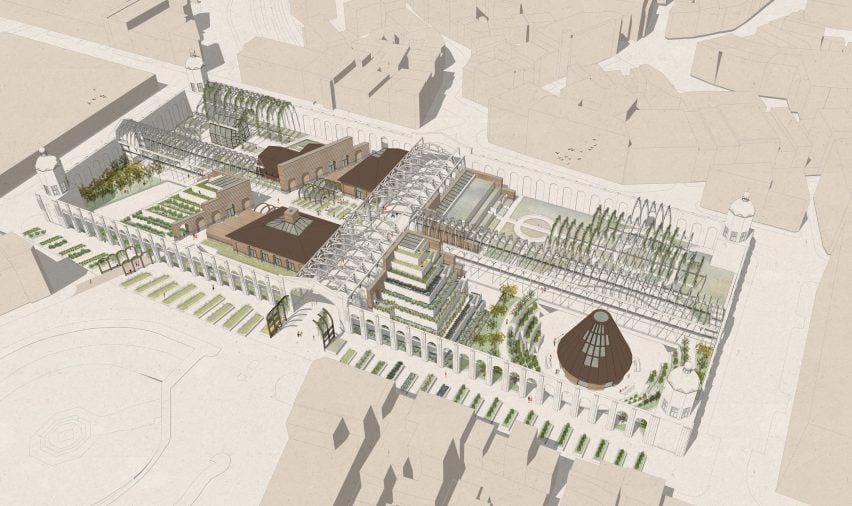
Smithfield Food Skills Market by Monika Gutauskaite
"The Smithfield Food Skills Market proposal focuses on the production and preservation of food within an urban context, enabling people to learn necessary food skills.
"It will also work as a network across London, allowing people to share the produce and knowledge, as well as celebrate the food.
"Although the site history is rooted in the meat trade, the amount of land required for meat production is not viable in the urban context.
"Therefore the project focuses on plant-based food production in the urban environment, using traditional food growing methods with soil."
Student: Monika Gutauskaite
Course: RIBA Diploma in Architecture
Tutor: Darren Stacey
Email: ribastudio[at]brookes.ac.uk
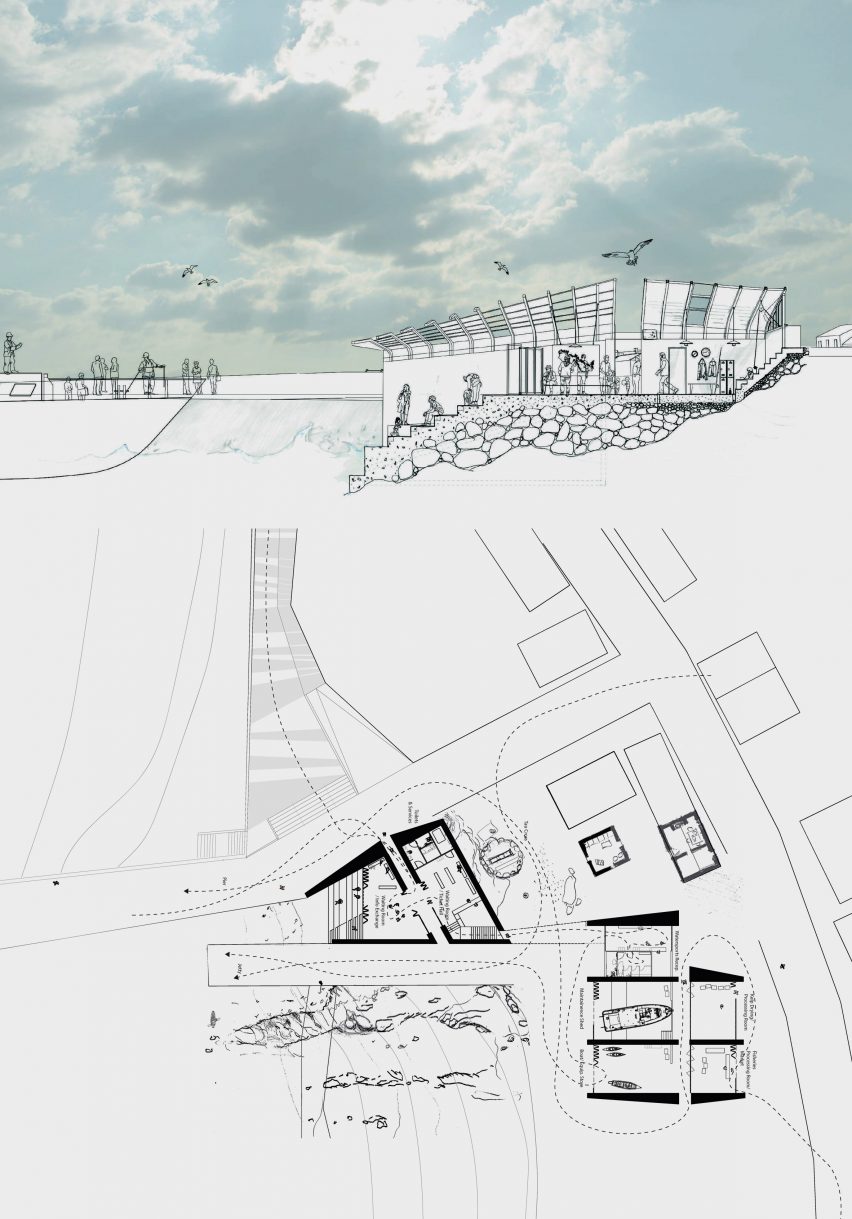
Islands of Imagination by Niall O'Cleirigh
"The project draws on the commonality shared by those who roam – a shared emotional experience connected by the language of music, sound and silence. In our every day, we are caught in a cycle of repetition. This project offers sanctuary, reprieve and space to rekindle awareness.
"Located nine miles northwest of Donegal, the remote Tory Island rests shrouded in mythology. It is isolated, silent, and exists in a semi-dream-like state – a distant memory, or perhaps a creation of the imagination.
"For islanders, leaving and emigration are inevitable and a rite of passage. For visitors, it's an idyllic escape and a place one longs to be. Away from the island, disconnected, only memory remains.
"The project explores the experience of being away from and the idea of home. With distance, the imagination grows, and an idealised picture of the home is painted.
"The project is a journey in time, space and a voyage of self-discovery to propose an architecture that speaks to this narrative. It generates a range of interventions and spaces that offer moments of reprieve that are reactive to the climate, community, culture, the exchange of music and stories, and the silence and vernacular of Tory Island."
Student: Niall O'Cleirigh
Course: RIBA Diploma in Architecture
Tutor: Guan Lee
Email: ribastudio[at]brookes.ac.uk
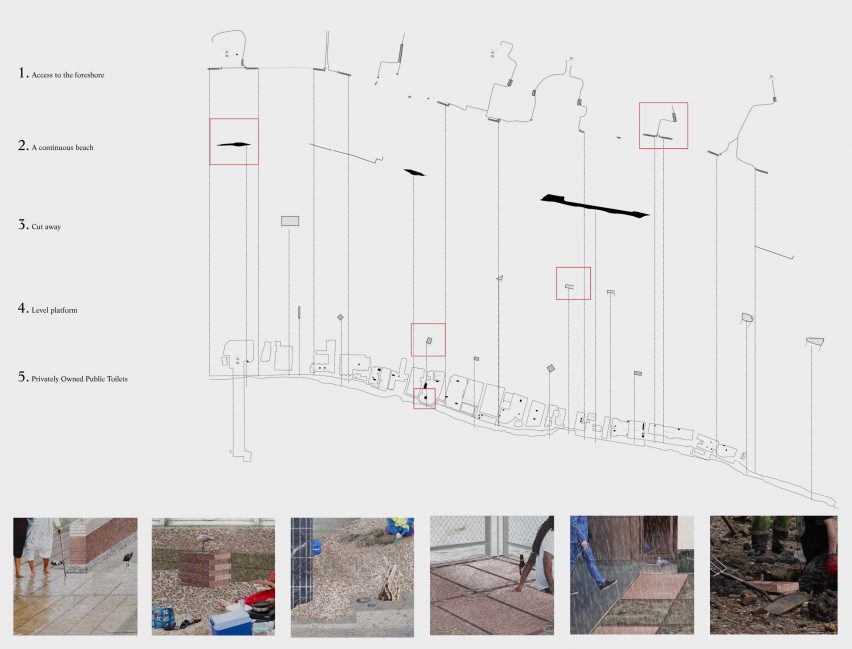
London's Quarry – Reclamation on/of the Thames Foreshore by Rosie Nicolson
"Ten stone-clad buildings in the City of London are currently earmarked for demolition. The majority were built in the 1980s and many are due to be replaced by glass buildings more than three times their current size.
"This project treats the stone on these buildings as London's Quarry – a pre-extracted resource that amounts to roughly 700 metres-cubed of stone and will continue to accumulate for the foreseeable future until the stone buildings run out or until growth in the city makes an overdue transition to a circular economic model.
"The proposal is a landscape strategy and series of public realm interventions that intends to retain and improve access to the Thames foreshore, which is a vital public space in central London. The Thames riverbed is the property of the crown estate – a public asset. This allows it a freedom that most of the privately owned riverside developments and their so-called 'public' realms lack.
"Rising sea levels put the beaches at risk, while the twice-daily tide changes the spatial experience of the foreshore, washing away any individual, temporary claims to it."
Student: Rosie Nicolson
Course: RIBA Diploma in Architecture
Tutor: Alison Crawshaw
Email: ribastudio[at]brookes.ac.uk
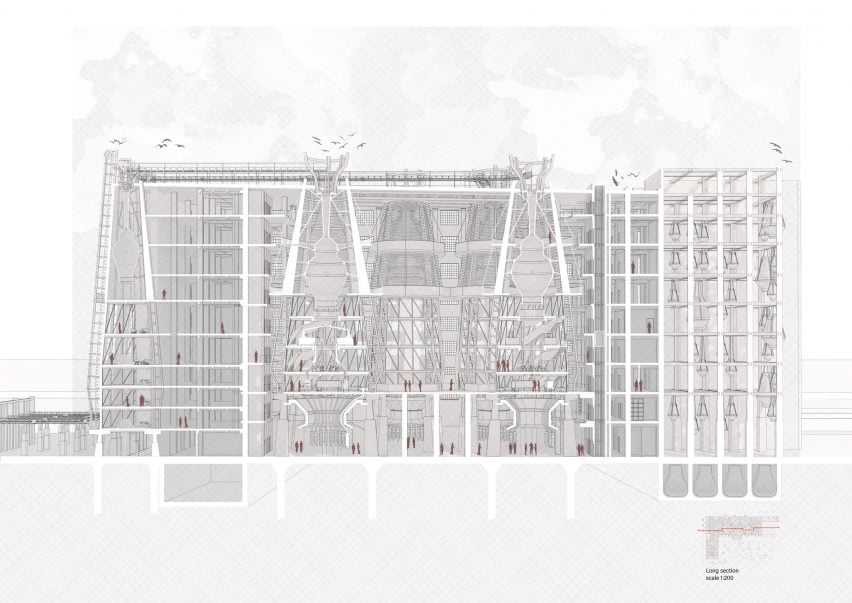
Soya Locavore District by Radostina Stoyanova
"The Soya Locavore project is located in London's Royal Docks, Silvertown in Newham. Once the largest flour mill in the UK, the site has been neglected since the early 1990s and the vast plot now offers an opportunity for large-scale redevelopment with luxury apartments and trendy businesses and hospitality.
"The brief evolved as a reaction to the dystopia of such a development in one of the most deprived London boroughs, which faces prevailing food insecurity issues. Half of Newham's children live in households experiencing poverty, hunger and insufficient nutrition.
"Our urban landscape has transformed as we live in megacities that are disconnected from food, ignorant of the environmental impact of our dietary habits. We live in times of historically high levels of meat consumption, fast food, and highly processed foods that are no longer grown close to home, as they were in post-war Britain.
"The proposal responds to these macro-scale global environmental crises, the negative impact of intensive agricultural practices and the borough's concentration of fast food chicken shops to offer the first of its kind – a soya production hub, teaching communities how to cultivate and consume new types of plant-based proteins."
Student: Radostina Stoyanova
Course: RIBA Diploma in Architecture
Tutor: Luke Murray
Email: ribastudio[at]brookes.ac.uk
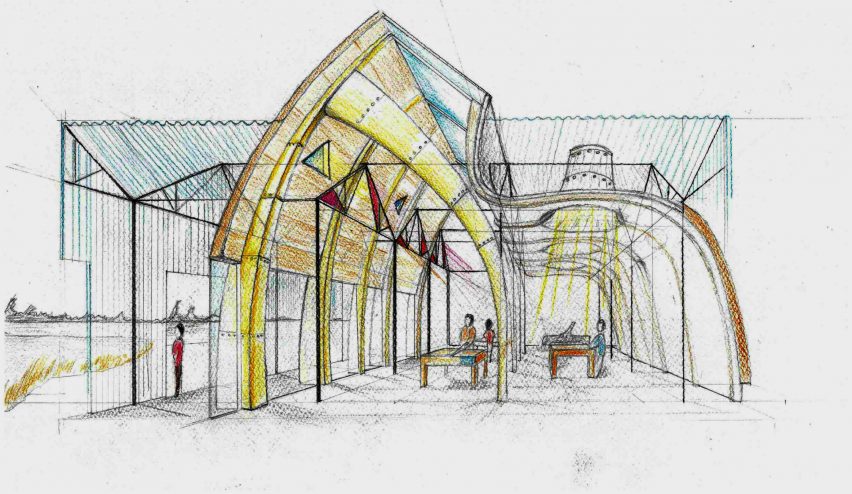
Wetlands Workshop by Eoin Carroll
"Peat harvesting in Ireland ceased in 2020 and the semi-state company Bord na Móna, which was responsible for peat exploitation, is now committed to honouring its extraction licence by rehabilitating the cutaway bogs.
"The project focuses on an existing mechanical workshop in the Boora bogs in the Irish Midlands, originally responsible for building and maintaining peat harvesting machines. The project seeks to establish new ways for people to interact with the landscape in a meaningful and sustainable way.
"Inspired by the emerging vegetation of abandoned cutaway peat-lands, the new Wetlands Workshop repurposes the existing building to include a typha water-reed insulation factory, thatching trade school, base for water-reed preparation for thatching, and spaces to facilitate community gatherings to offer a renewed focal point to the communities surrounding the peatland.
"A symbiotic architectural approach combines the needs of new functions with the existing industrial architecture, creating a new purpose growing from the existing to ensure a sustainable future.
"In the same way, reeds have colonised areas of cutaway bog-land and the building seeks to embody the history and nature of the place, combined with its new activities."
Student: Eoin Carroll
Course: RIBA Certificate in Architecture
Tutor: Noel Brady
Email: ribastudio[at]brookes.ac.uk
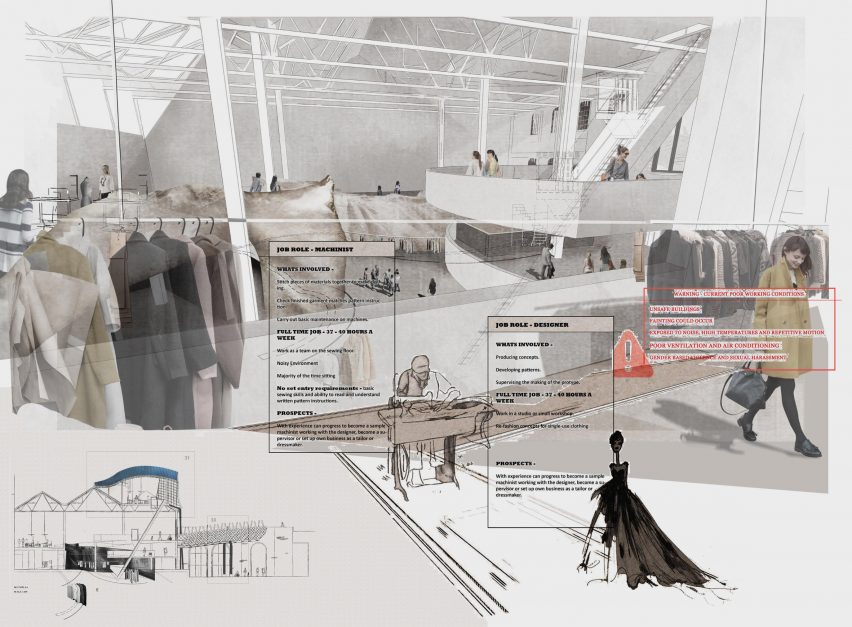
Ethical Apparel National HQ by Rachel Jones
"This HQ for an ethical apparel manufacturer is located in Leicester. Once known for its thriving textile industry, the city is now recognised for its 'dark factories' in the spotlight of Covid, which saw heavy press coverage of money laundering, verbal abuse, and shocking working conditions to produce high quantities of stock at fast turnovers for well-known brands.
"The project aims to express clothes production from design to sales, blur the boundaries between white collar and blue collar, front and back of house, and focus on the well-being and celebration of the workers' skill and craft.
"The project aims to reinstate the missing link between consumer and worker through an immersive public experience of production spaces, design studio, sewing floor and pattern making, linked by a continuous walkway.
"The project reuses the historic Evita House, built in 1898 as a former goods shed for London and North Western Railway, connecting the project to the importance of the railway in Leicester's industrial history.
"The building's position between industrial and retail areas marks the broken link between consumer and worker, which the project aims to restore."
Student: Rachel Jones
Course: RIBA Certificate in Architecture
Tutor: Ben Stringer
Email: ribastudio[at]brookes.ac.uk
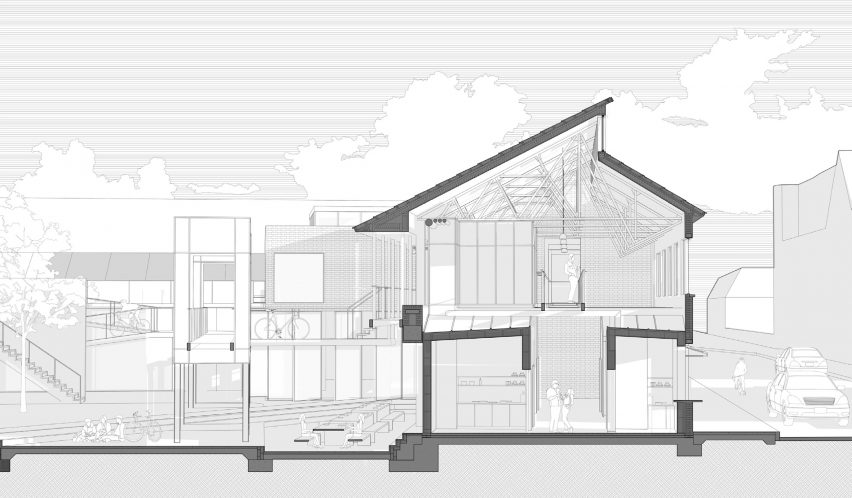
Street of Wheels by Paul Colfer
"The way we use our cities is changing due to innovations in technology, particularly the smartphone. Takeaway orders are placed and communication between delivery riders and kitchens is made simultaneously through their devices. The riders identify public spaces in the city to wait for orders, take breaks, and create social environments with other riders.
"Food serves as nourishment as well as an important cultural expression that brings people together, but the city's role as the primary location of exchange is being challenged by technology. The Street of Wheels will seek to address this marginalisation and develop an architectural prototype for adapting existing buildings to accommodate communities of delivery riders, dark kitchen employees, and the public they serve.
"Digital and physical communities will merge and the process of ordering, collection and dining will be revealed to the workers and public through a hub for relocated dark kitchens with improved conditions for delivery riders and kitchen workers, a co-operative will be created for delivery riders and kitchen workers offering advice on their worker's rights, there will be a recycling centre to convert takeaway plastics into self-build components, and adaptive reuse of existing redundant buildings and site incorporating public space will be incorporated.
"The project aims to create a community-owned co-operative of 10 to 15 delivery riders and 5 to 8 relocated dark kitchens. But as the co-operative grows, the component-led approach allows for expansion as well as disassembly if the needs of the occupants change."
Student: Paul Colfer
Course: RIBA Certificate in Architecture
Tutor: Theo Malloy
Email: ribastudio[at]brookes.ac.uk
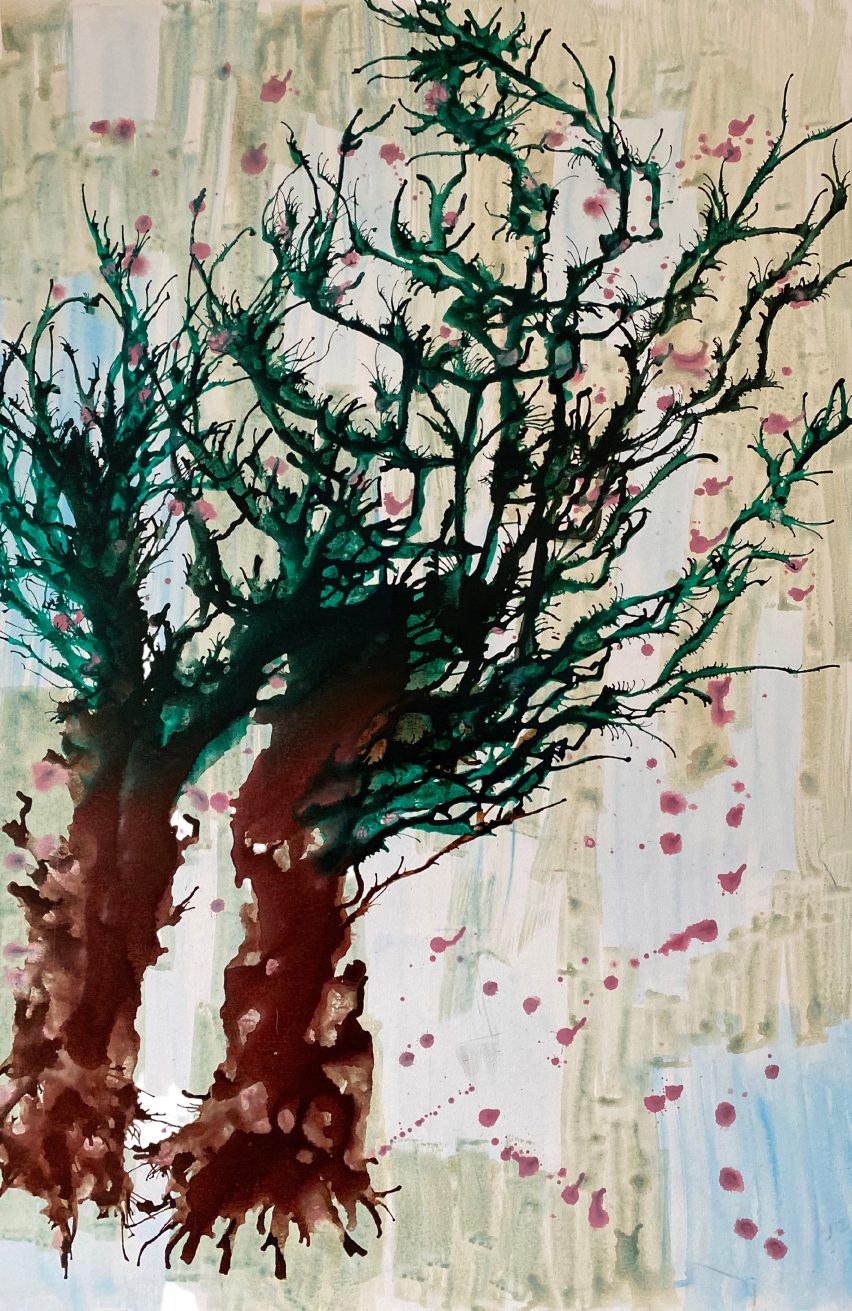
Experiments by Amal el Mchrafi
"This project is one of a range of drawing, making, painting, printing, casting and observational experiments taken over the year to help inform the design projects titled 'A Going Concern', which explores obesity, and 'A Day in the Life of...', which focusses on Muchute Skatepark on the Isle of Dogs in London."
Student: Amal el Mchrafi
Course: RIBA Foundation in Architecture
Tutors: Alexandra Lacatusu and Adam Barlow
Email: ribastudio[at]brookes.ac.uk
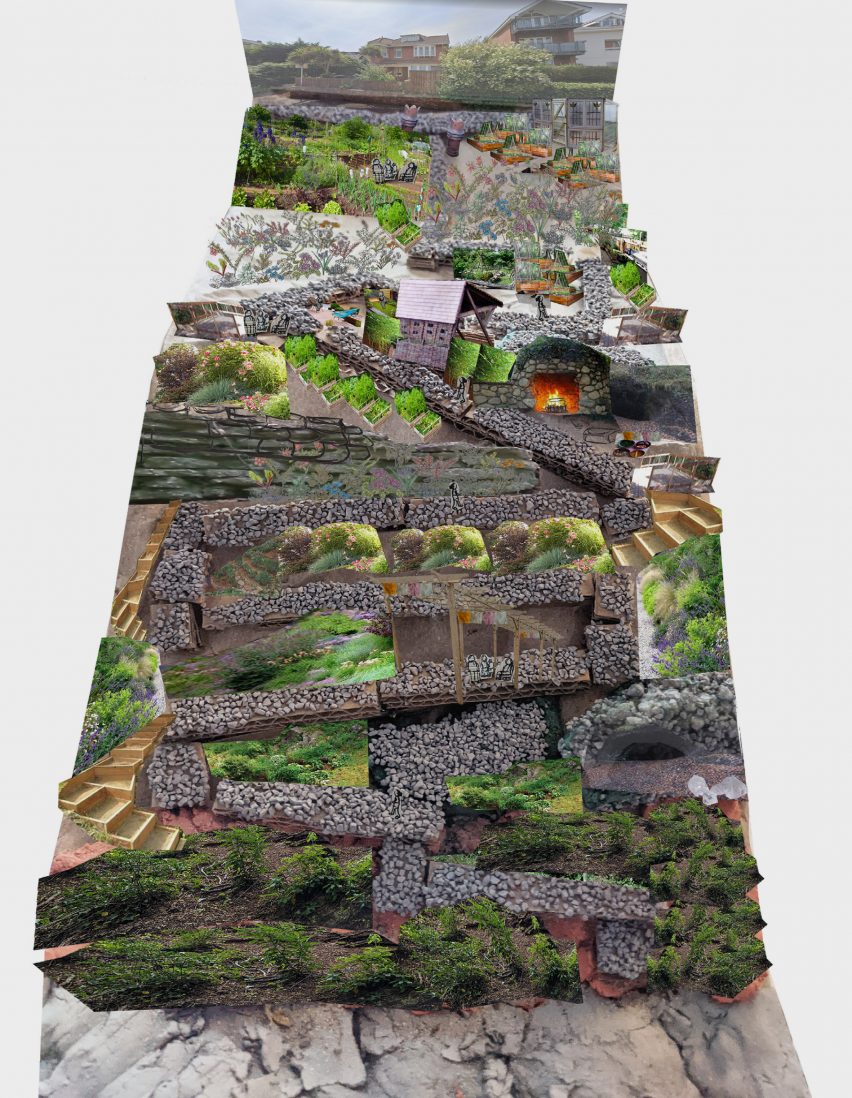
Accessible Community Gardens by Charlotte Edwards
"The project seeks to provide access to outdoor space to flats adjacent to the historic Alum Chine valley in Bournemouth in response to the restrictions of the pandemic and lock-down, imagining how things could look very different if the way we used natural spaces around buildings changed.
"The intervention offers a meandering accessible ramp down to the existing Alum Chine pathway combined with a bird-hide, individual garden plots, community spaces and facilities for naturally dyeing fabrics using the locally mined alum – which gave its name to the valley – to fix the colours."
Student: Charlotte Edwards
Course: RIBA Foundation in Architecture
Tutor: Alice Howland
Email: ribastudio[at]brookes.ac.uk
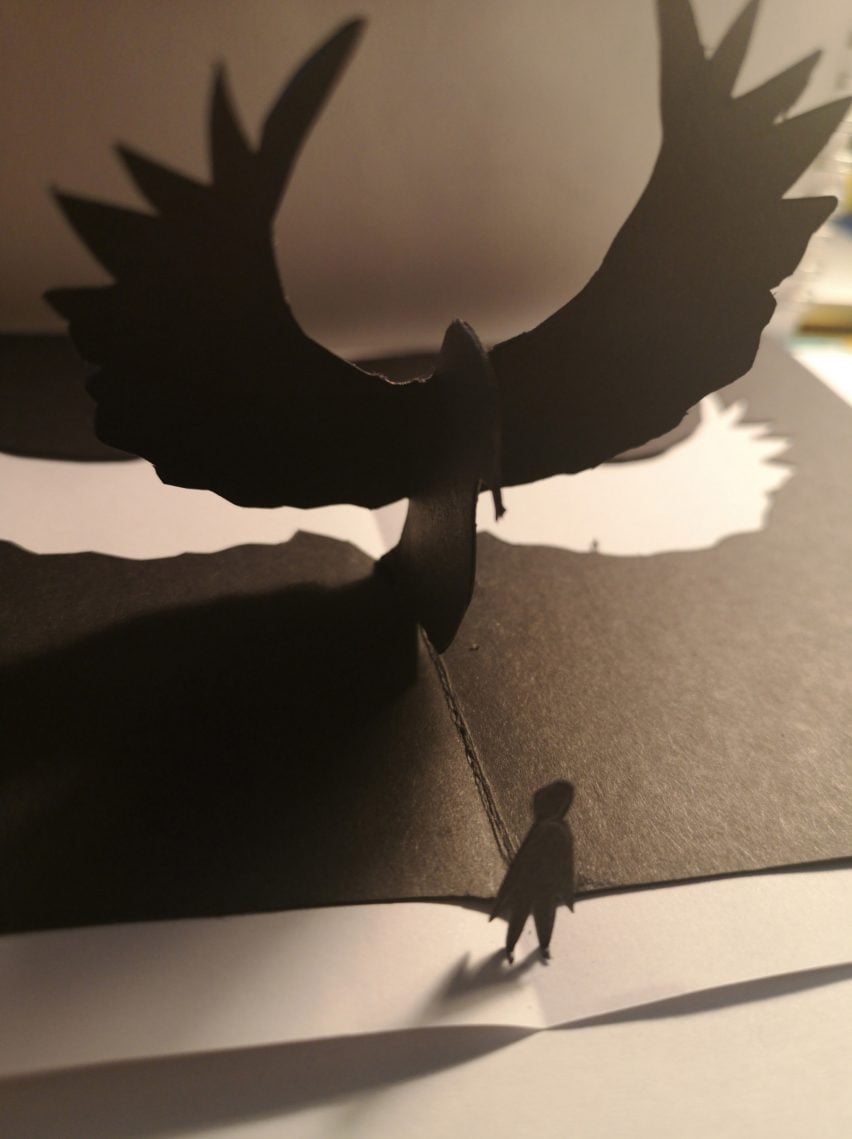
Where Am I? (The Bird) by Ingrid McLaren
"This bird pop-up was made as an initial prototype to illustrate how impressionable someone can become when they are isolated from society. For Mclaren 'A Going Concern' project, the student focused on incels and the way they are radicalised online.
"The bird symbolises how imposing the communities they find there can be. There is pressure for them to feel like they belong, and the lengths they go to achieve this are often huge jumps from where they would have found themselves in the outside world.
"For the incels, the online world is often more real than the outside world, which dictated McLaren to make something that would be accessible to them in their space."
Student: Ingrid McLaren
Course: RIBA Foundation in Architecture
Tutor: Connie Ivanova
Email: ribastudio[at]brookes.ac.uk
Partnership content
This school show is a partnership between Dezeen and Oxford Brookes University. Find out more about Dezeen partnership content here.